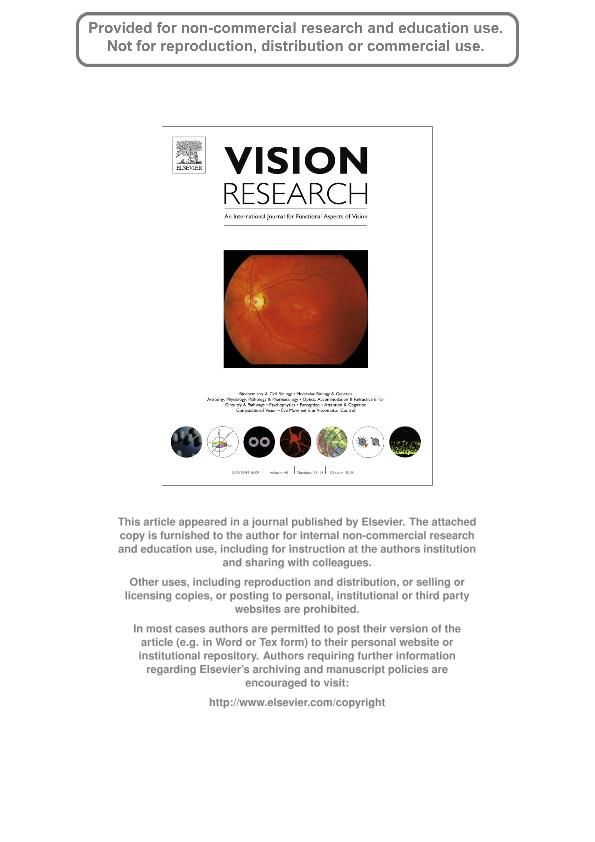Artículo
Speed adaptation as Kalman filtering
Fecha de publicación:
10/2008
Editorial:
Pergamon-Elsevier Science Ltd
Revista:
Vision Research
ISSN:
0042-6989
e-ISSN:
1878-5646
Idioma:
Inglés
Tipo de recurso:
Artículo publicado
Clasificación temática:
Resumen
If the purpose of adaptation is to fit sensory systems to different environments, it may implement an optimization of the system. What the optimum is depends on the statistics of these environments. Therefore, the system should update its parameters as the environment changes. A Kalman-filtering strategy performs such an update optimally by combining current estimations of the environment with those from the past. We investigate whether the visual system uses such a strategy for speed adaptation. We performed a matching-speed experiment to evaluate the time course of adaptation to an abrupt velocity change. Experimental results are in agreement with Kalman-modeling predictions for speed adaptation. When subjects adapt to a low speed and it suddenly increases, the time course of adaptation presents two phases, namely, a rapid decrease of perceived speed followed by a slower phase. In contrast, when speed changes from fast to slow, adaptation presents a single phase. In the Kalman-model simulations, this asymmetry is due to the prevalence of low speeds in natural images. However, this asymmetry disappears both experimentally and in simulations when the adapting stimulus is noisy. In both transitions, adaptation now occurs in a single phase. Finally, the model also predicts the change in sensitivity to speed discrimination produced by the adaptation.
Archivos asociados
Licencia
Identificadores
Colecciones
Articulos(ILAV)
Articulos de INST.DE INVESTIGACION EN LUZ, AMBIENTE Y VISION
Articulos de INST.DE INVESTIGACION EN LUZ, AMBIENTE Y VISION
Citación
Barraza, Jose Fernando; Grzywacz, Norberto M.; Speed adaptation as Kalman filtering; Pergamon-Elsevier Science Ltd; Vision Research; 48; 23-24; 10-2008; 2485-2491
Compartir
Altmétricas




